[ad_1]
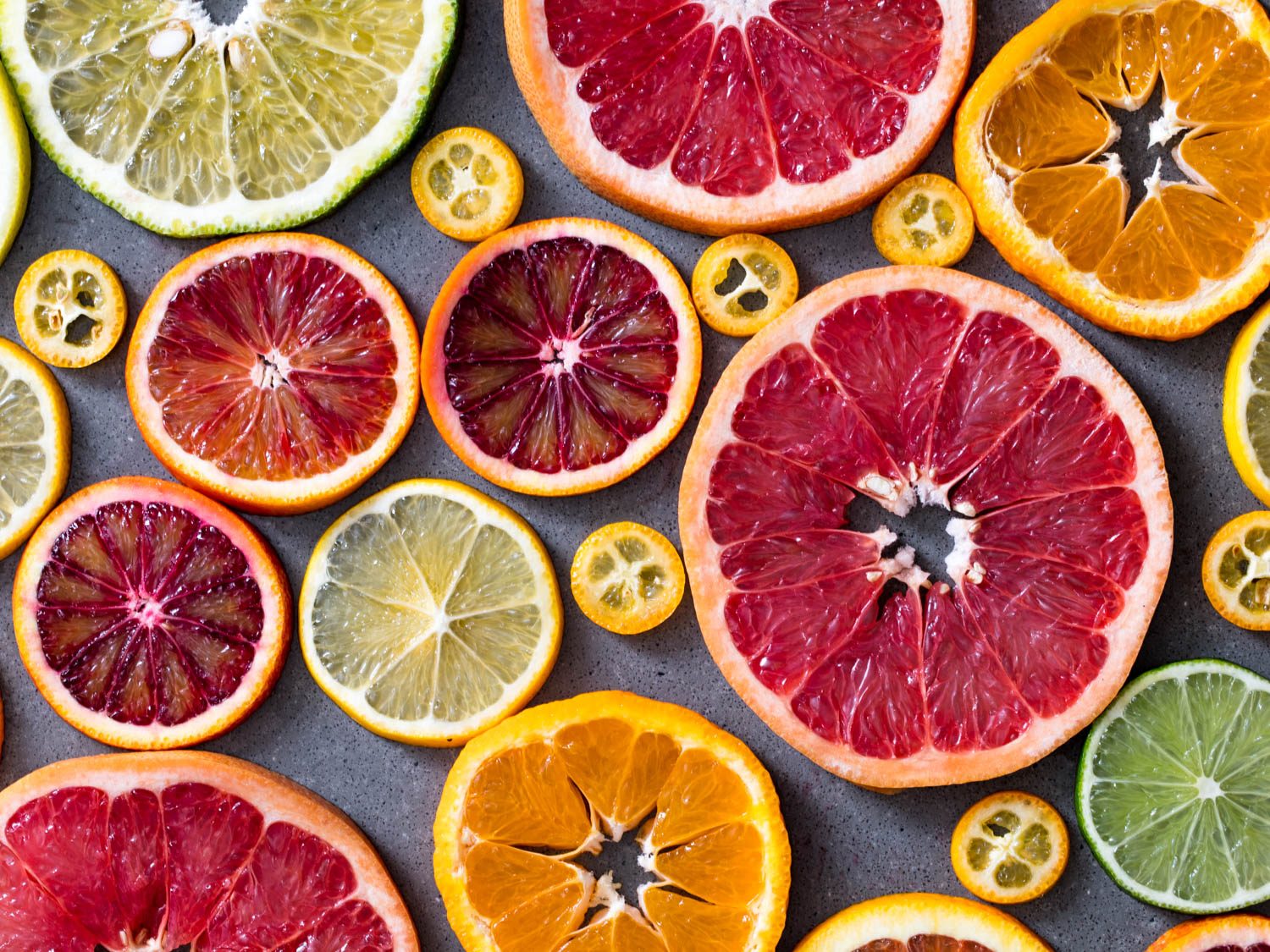
[Photograph: Vicky Wasik]
It’s winter—that is, cold season—and we’re all chugging orange juice to get our vitamin C, right? Well, it turns out all the OJ in the world won’t help prevent or treat the common cold; the ascorbic acid in citrus fruit just isn’t effective for most people.
But that shouldn’t stop us from enjoying as much citrus as we can, and from as many varieties as we can, especially when the sun sets at 4:30 p.m. and it’s too cold to go outside for a week. Oranges, kumquats, ugli fruit, and Buddha’s hands may not cure the common cold, but they sure are edible sunshine, packed with the remarkable power to brighten, cure, preserve, acidulate, aromatize, enrich, and utterly transform every food they touch.
Thanks to thousands of years of hybridization and the wonders of modern globalization, we have access to more citrus fruits today, with more storied uses and applications, than brands of nasal decongestants. You may have tasted clementines and tangelos, but how about blood limes, Xinhui mandarins, and the mysteriously un-juice-able Yemenite citron?
No? Okay, let’s get to know them a little better.
The Original Big Three
Most evidence suggests that citrus fruits originated in subtropical Asia, particularly China, India, and Malaysia, though more recent research hypothesizes an even earlier progenitor from Australasia. Regardless of where they’re from, all modern citrus descend from three parent species: citron, mandarin, and pomelo. Their children branch off not so much in a neat family tree as in a messy, incestuous love circle. Think of these three originals like the primary colors: By mixing different attributes from each, you can create any new citrus fruit. Here are their main characteristics, presented in grotesquely oversimplified form:
- Citron: A super-thick layer of bitter, inedible pith surrounding small to nonexistent juice sacs. The juice is very sour, and the skin is yellowish and smells lemony when the fruit is ripe.
- Mandarin: A squat, orange-hued fruit that’s relatively easy to peel and segment, revealing a sweeter, juicier core.
- Pomelo: Huskier than the other species, with a uniquely aromatic skin. The pith is thicker than that of a mandarin, but less enveloping than the citron’s, and the interior fruit and/or membranes can taste bitter.
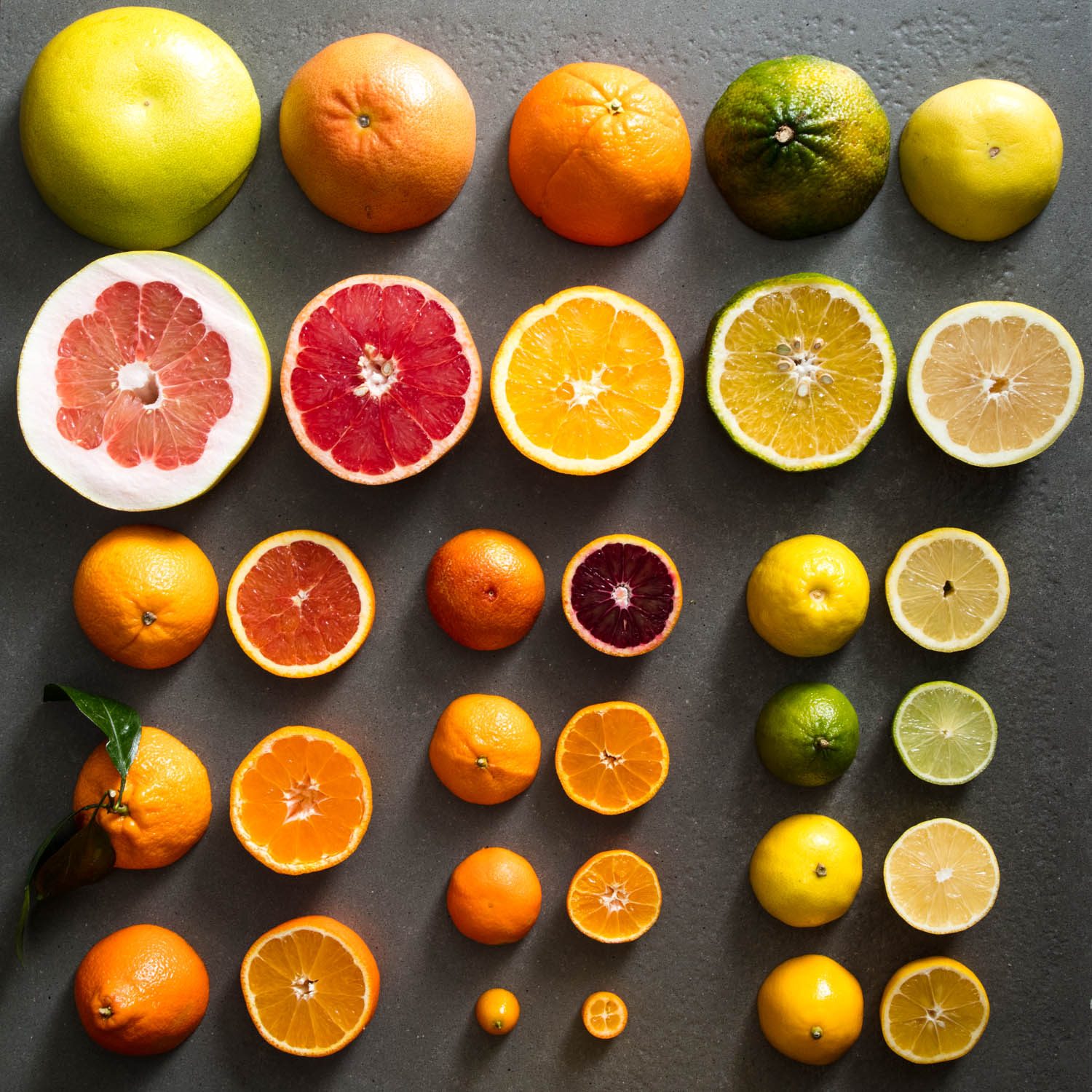
Modern citrus varieties, ranging from the pomelo to the kumquat.
Since today’s common citrus fruits are all crossbreeds of these parent species, I’ve skipped the whole phylogenetic structure and organized this guide into decidedly unscientific “houses” representing the most commonly available varieties. But if you want, feel free to quiz yourself and others, Sex and the City–style, on which of the original citrus fruits best describes you. Are you a true mandarin, tender and sweet, or a stalwart, puckery citron, fierce and elusive to the core?
House Orange
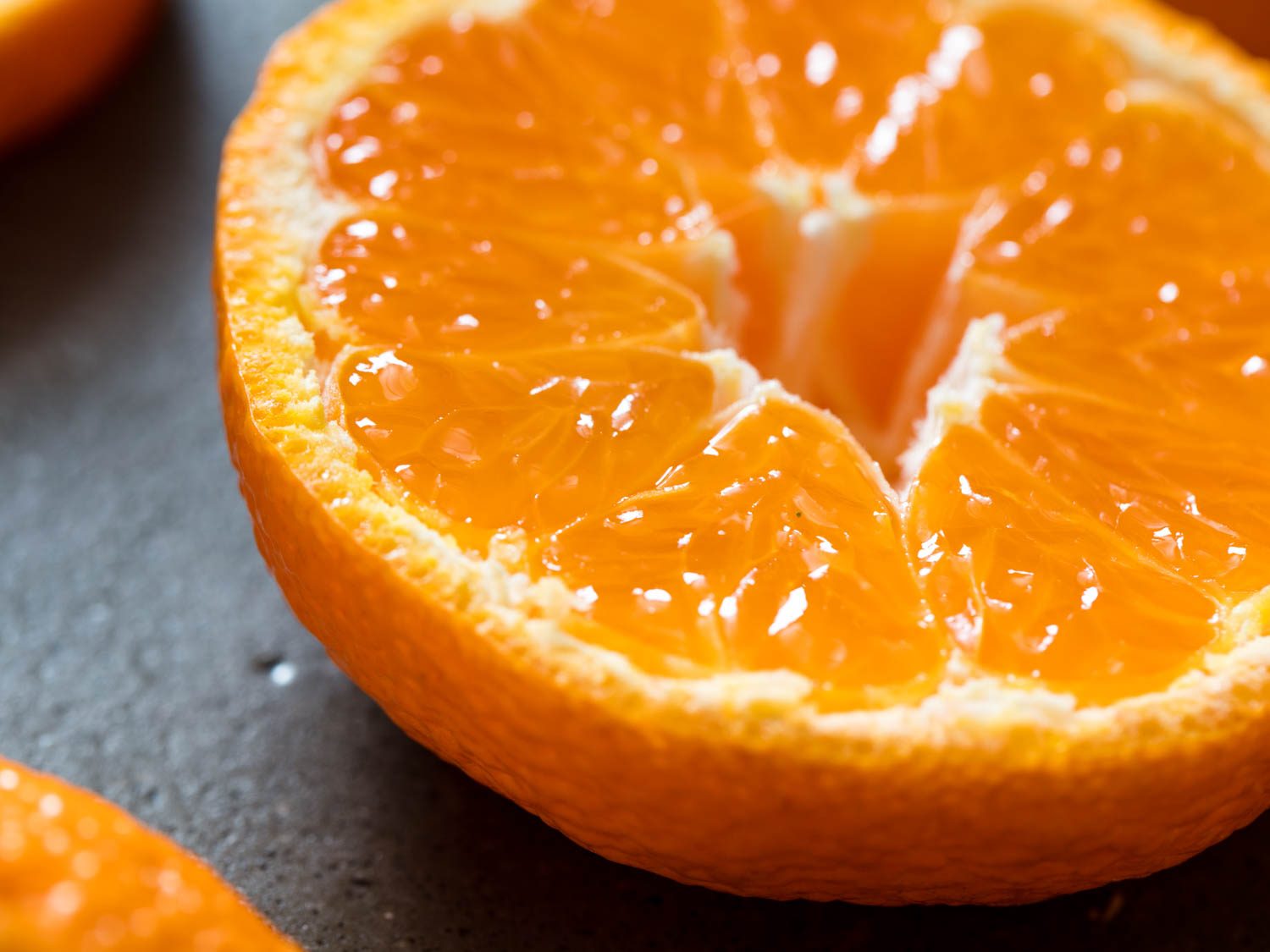
Members of House Orange,* which include navels, Valencias, clementines, and tangerines, trace a clear lineage to the mandarin, and can be further broken down into three categories: those good for eating out of hand, those good for juicing, and those specialized for scenting or candy-making.
Tangerines (from, hey, Tangier!) may be the ultimate peel-and-eat fruit: Smaller than most other oranges, they have soft skins and segments that are easy to separate, with sweeter, less sour juice. Seeded mandarins (in this case, the modern fruit by that name); seedless clementines and satsumas; and…uh…nippled tangelos (and their less perky Minneola cousins) are close relatives, typically on the sweet side.
Navel oranges are the other classic eating oranges, larger and firmer than tangerines, with an innie belly button at the bottom and a robust, more acidic orange flavor. That firmer skin is ideal for zesting and candying, too. If you live around California, you may see Cara Cara navels at the market: They’re rosy-pink, sweeter, and more floral than other navels, with an acidity on par with or lower than that of a tangerine. Sweeter still are blood oranges, which, unlike navels, don’t peel easily, but are best for eating raw. Suprème them and add liberally to salads, where the berry notes of their crimson flesh can shine.
If you’re juicing, opt for Valencias, which are a pain to peel and segment since they’re so…juicy. These typically appear later in the season, around March, and are often labeled as “juicing oranges.” But navels make delicious juice, too, admittedly with more elbow grease and somewhat lower yields. (Whichever orange you decide to juice, consult our guide to the best manual citrus juicers here.)
Then there’s the Weird Oranges, ones bred specifically for their peels, usually at the expense of unpalatably sour or bitter flesh. If you walk down the streets of Seville, you really will see Seville oranges (a.k.a. bitter oranges) lining the sidewalks. They’re what makes triple sec, Grand Marnier, and curaçao taste like…triple sec, Grand Marnier, and Curaçao, and their bitter, sour character can stand up to tons of sugar, so they make great marmalade. Over in Italy, they grow bergamot, the oil-rich citrus used to flavor Earl Grey tea. And speaking of tea, in China, the Xinhui mandarin gets put to similar use in scenting pu-erh for flavor and medicinal reasons. Chinese-medicine practitioners are big fans of citrus peels for their throat-soothing properties, especially once they’ve been aged a few years.
* Not to be confused with the House of Orange, the royal family from the Netherlands.
House Lemon
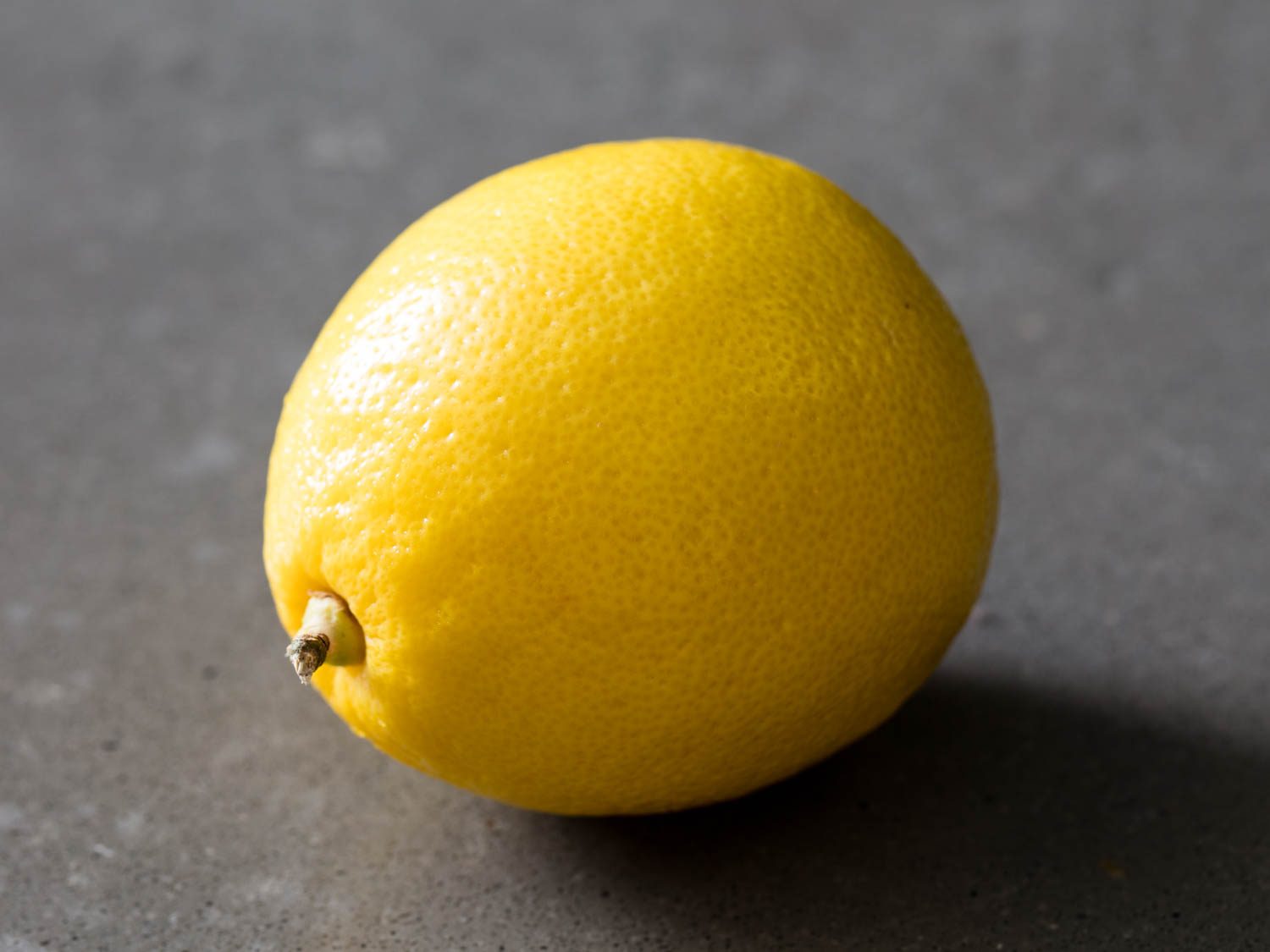
The sourest of the citrus houses, lemons are genetically a mix of citron and bitter orange. The lemons you see in your supermarket are likely Eureka lemons, by far the most common on the market today, but specialist growers produce other varieties, such as the oil-rich Sorrento from Italy, which is what goes into limoncello. There’s also the sweeter, less acidic, and more fragrant Meyer lemon, which to me has a distinct thyme taste that’s great for baking. You don’t need me to tell you what to do with lemons, but I’d be remiss if I didn’t point you toward Stella’s recipe for a delicious citrusy syrup made from spent lemon rinds.
House Lemon gets really interesting when you consider the citrus fruits grown for their skin and pith, rather than juice. That includes the original citron, which you can candy whole to cut up and throw into pound cake or serve as a palate cleanser, and the long-tendriled Buddha’s hand (which I insist should be renamed the Ood lemon), also good for candying whole or zesting into long strips. If you’re Jewish, you’ve likely handled a bumpy-skinned etrog, a biblically significant ceremonial citron closely associated with the fall holiday of Sukkot, which Jews historically also turned into liqueur or candy for everything from partying to easing childbirth.
House Lime
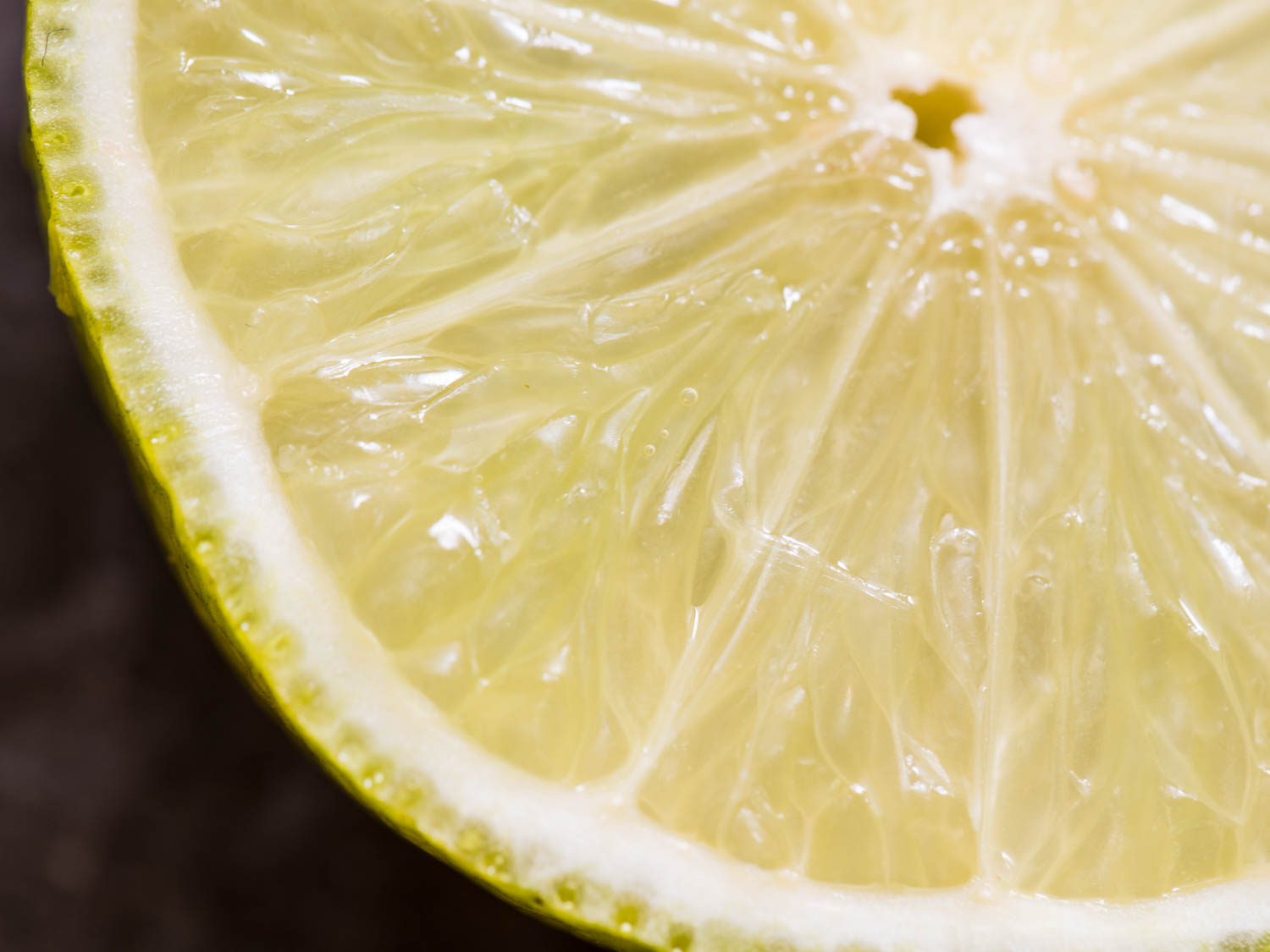
Limes are sweeter and less acidic than lemons, but as with lemons, there’s one major domesticated variety in supermarkets: the Persian lime, popular from Mexico to Vietnam. The next most common is the tiny Key lime, which grows well beyond the Florida Keys. Unless you have ready access to a great supply, Key limes generally aren’t worth the trouble of juicing and seeding, considering their flavor is often…well, I’ll let Stella tell you. If you’re in South Asia or at a lucky North American farmers market, you might spot a bunch of sweet limes, a.k.a. Citrus limetta. These limes start off green-skinned but ripen to yellow, and are, as the name suggests, sweet—good for juicing just like oranges for a no-sugar-added limeade.
Other lime varieties—such as the makrut lime, which you probably know by another name that we avoid for its pejorative meaning—are prized for the unique flavor of their skin and leaves. Makrut lime leaves are popular across South and Southeast Asia, especially Thailand, where they provide a cooling, fragrant counterpoint to chilies and garlic in curry pastes. But the bumpy fruits also get zested for culinary and medicinal uses all around Asia, and you can turn the skin or whole fruit into candy or liqueur.
Some limes, such as the calamansi and rangpur varieties, are really more like sour oranges, turning orange when ripe. The former’s sweet-floral-sour juice is popular among Filipino and Hainanese cooks, who use it straight up or in all kinds of tart sauces. The latter has origins in Indian cooking, but got a burst in popularity when Tanqueray added it to a line of gin.
It’s hard to describe the flavor of these specialty limes—the best way to learn is to taste one yourself. That’s definitely true for the finger lime, a trendy new variety that comes in elongated pods for you to split open, revealing dozens of caviar-like juice sacs. Pop them in your mouth and they burst sweet-tart juice; it’s undoubtedly the most fun citrus fruit to eat. (Runner-up: its goth Australian cousin, THE BLOOD LIME.)
House Grapefruit
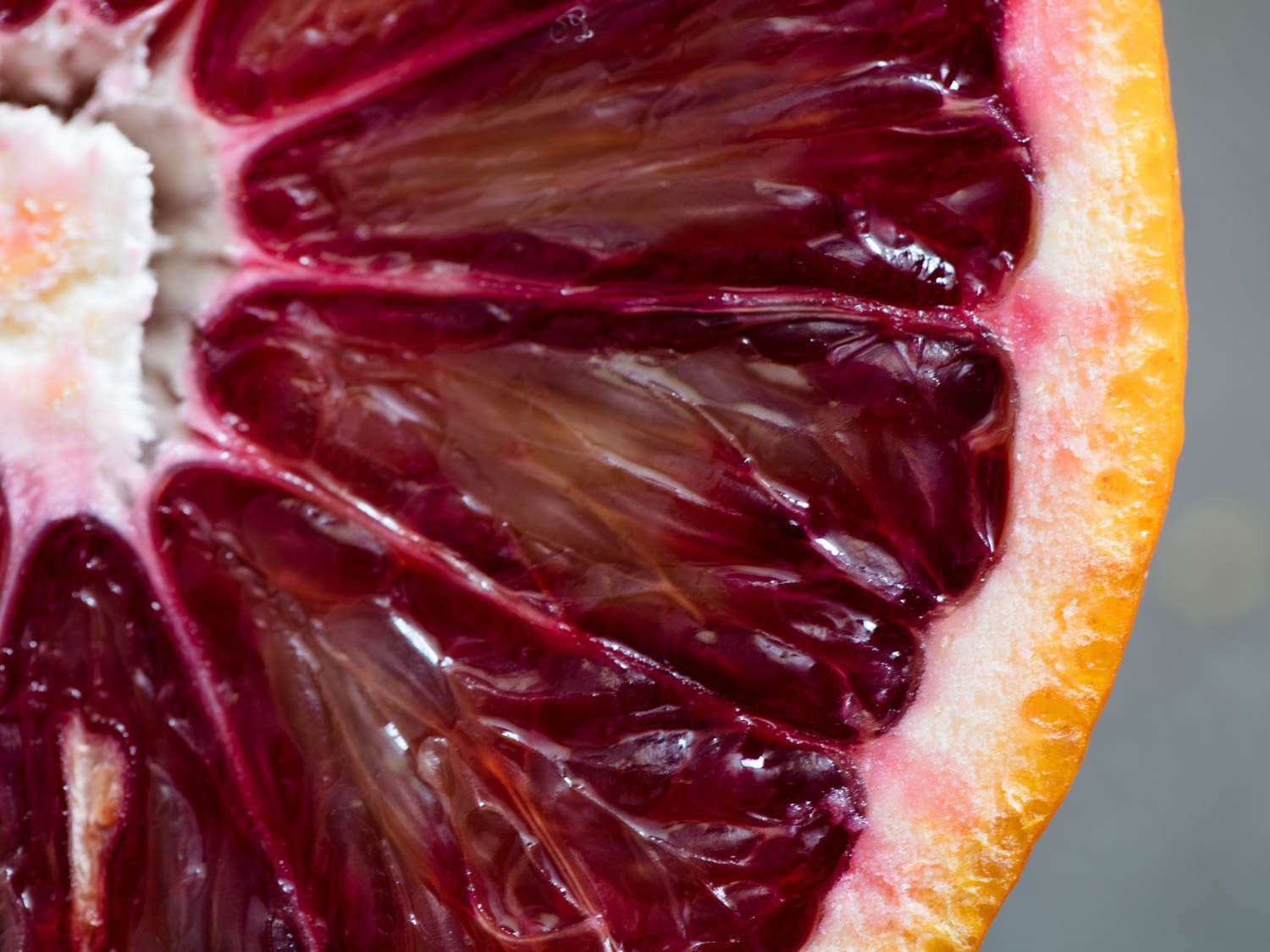
Grapefruits are the only major citrus Westerners eat that have a strong bitter taste in the flesh itself. Caribbean-born hybrids of pomelos and sweet oranges, grapefruits have flesh ranging from ruby-red to pink to white. (The latter, sometimes called oroblanco, enjoys a rich tiki history but is hard to find these days.) A particular grapefruit’s bitterness, sweetness, or acidity doesn’t track reliably to color, so the only way to know for sure is to cut in. Grapefruit’s subtle bitterness is a marvelous thing in cocktails, such as the classic Paloma.
In Asia, the pomelo reigns supreme. Most pomelos have the same volume of actual flesh as typical grapefruits (or slightly less), but thick layers of pith mean they’re usually substantially larger. Their juice sacs are also heartier, i.e., less juicy, than grapefruits’, and lack the grapefruit’s bitterness. (Keep away from the super-bitter pith, though.) Most people across Asia eat pomelo raw, either on its own or as part of a salad or dessert.
House Et Cetera
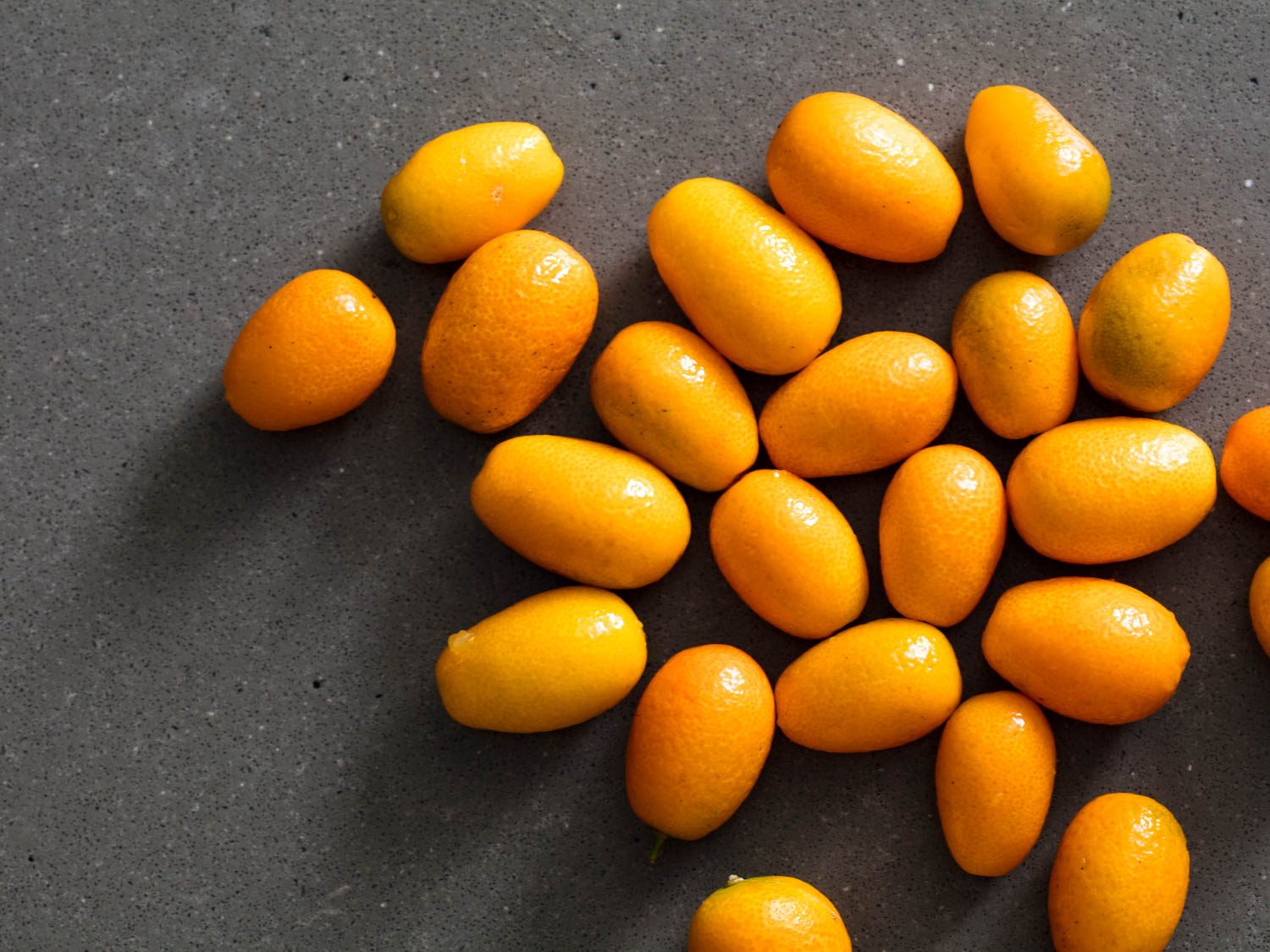
There are many, many varieties of citrus out there, including kinds that rarely, if ever, make it to the American market. Even if they did, lots of them wouldn’t fall neatly into any of the above categories. Here are some outliers to keep an eye out for that do sometimes appear in local groceries.
If there were such a thing as a celebrity fruit, yuzu would be it. This small, fragrant citrus from Japan looks like a lemon and tastes like a floral-aromatic sort of lime, but transcends the limitations of either, and it’s been the darling of chefs across the world for more than a decade. In Japan, yuzu juice gets squeezed into ponzu dipping sauce, while the zest may be preserved in salt to sprinkle over yakitori. Yuzu is also great to candy or preserve, Moroccan style, but if you’re shopping around the US, you’ll most likely be dealing with the bottled juice. It’s not as good as fresh, but still killer in pies, custards, and marinades.
Kumquats are easier to find fresh, and these small, delightfully tart little buddies are great for cooking whole, since the skin is tender enough to eat once tamed with heat, such as in a braise. Alternatively, you can pickle them in salt or vinegar, separating the bitter seeds out as you go. But my favorite treatment is to toss sliced kumquats with sugar to soften their skins for a few hours, then use the resulting syrup for cocktails while throwing the softened kumquats themselves into ice cream.
Yuzu and kumquats are pretty fruits. The ugli fruit, which is actually trademarked, is not. A Jamaican hybrid of a tangelo and a blobfish, the ugli fruit is more tart than many tangerines, but, like those fruits, peels and segments easily. It can taste very sweet and a touch grapefruit-y, and is typically exceptionally juicy. Eat it plain or juice it to add to dipping sauces and marinades, and remember that every citrus fruit possesses some kind of rich inner beauty.
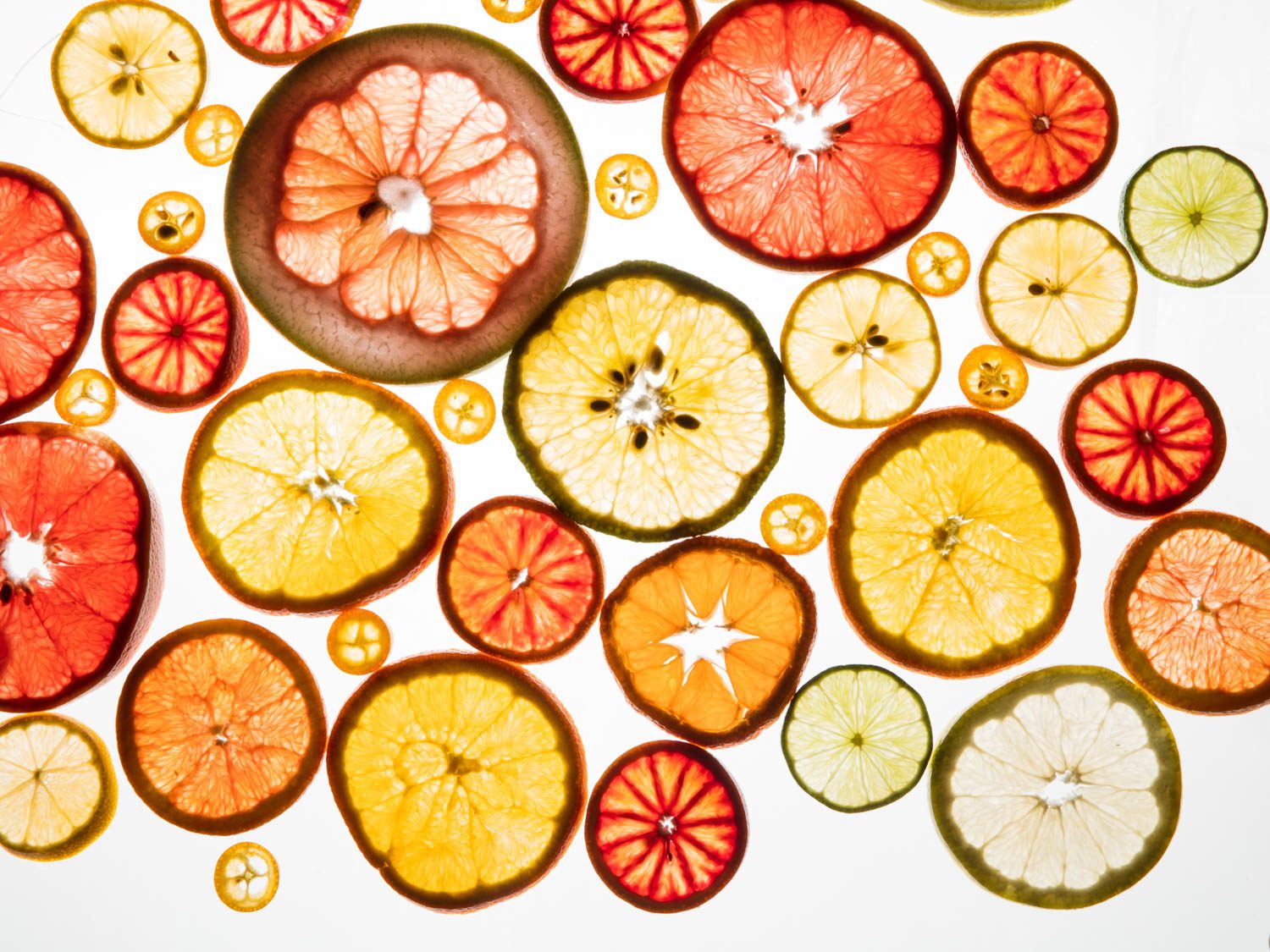
[ad_2]
Source link





